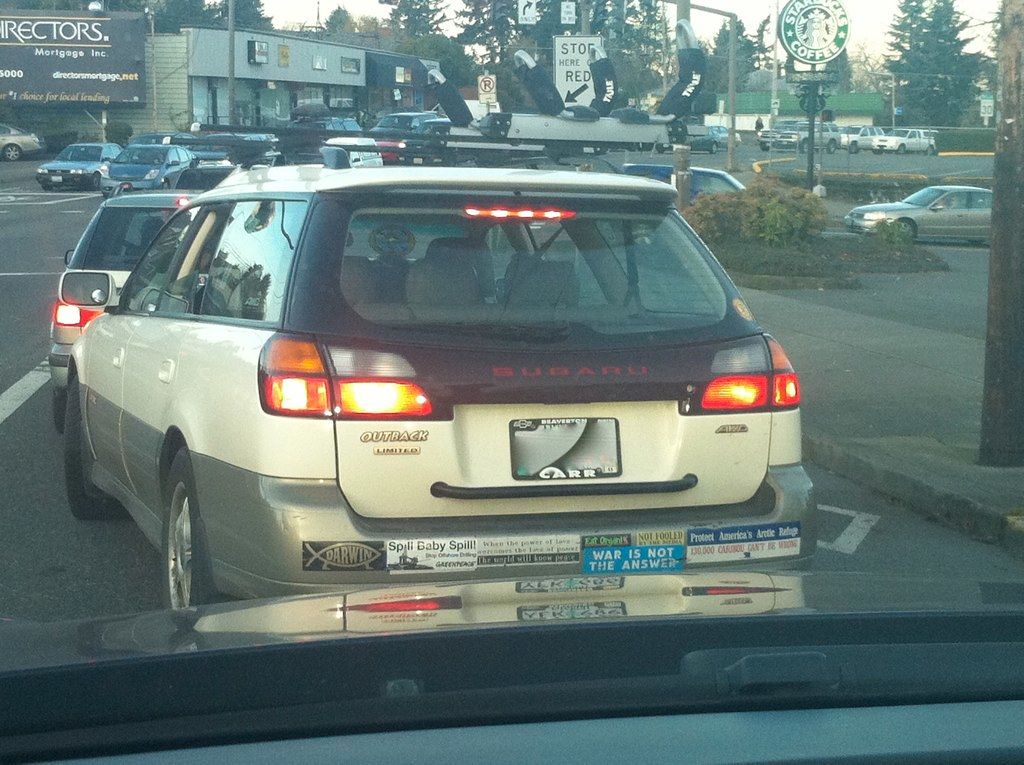
Alright, fellow road warriors and armchair traffic analysts, let’s talk about something that gets under everyone’s skin, whether they admit it or not: car stereotypes. It’s a fascinating, frustrating, and sometimes outright hilarious world out there on the asphalt. While we often champion the mantra of judging drivers, not their rides, let’s be brutally honest for a moment. The second a particular make or model materializes in our rearview mirror, a little, perhaps unfair, voice in our head might just pipe up with a preconceived notion or two about the person behind the wheel. It’s a phenomenon as old as the automobile itself, deeply woven into the rich tapestry of car culture and highway gossip.
See, for all its utilitarian purpose, a car is undeniably more than just a simple means of transportation; it’s a powerful extension of our personality, a reflection of our choices, our aspirations, and yes, sometimes, even our most regrettable driving habits. While no car is inherently “bad” – they are, after all, just complex arrangements of metal, rubber, and glass – the collective behavior of a visible minority of drivers has unfortunately bestowed upon their chosen chariots a rather… *spicy* reputation. From the blistering fast lane hoggers to the inexplicably slow cruisers, certain vehicles have become cultural shorthand for road-going nuisances, often to the profound chagrin of their more responsible, law-abiding owners.
So, buckle up, because we’re about to embark on an exhilarating deep dive into the sometimes-hilarious, often-frustrating, but always-insightful world of driver stereotypes. We’ve meticulously combed through the vast ocean of anecdotal evidence, the swirling eddies of internet chatter, and even some actual sociological insights to bring you a comprehensive, unflinching look at the cars everyone seems to associate with a particular, often exasperating, style of driving. And trust us when we say, the next time you spot one of these vehicles navigating your lane, you might just find yourself instinctively bracing for impact – or at the very least, a slight, involuntary increase in your blood pressure. This isn’t just a list; it’s a conversation starter and a shared cultural experience.
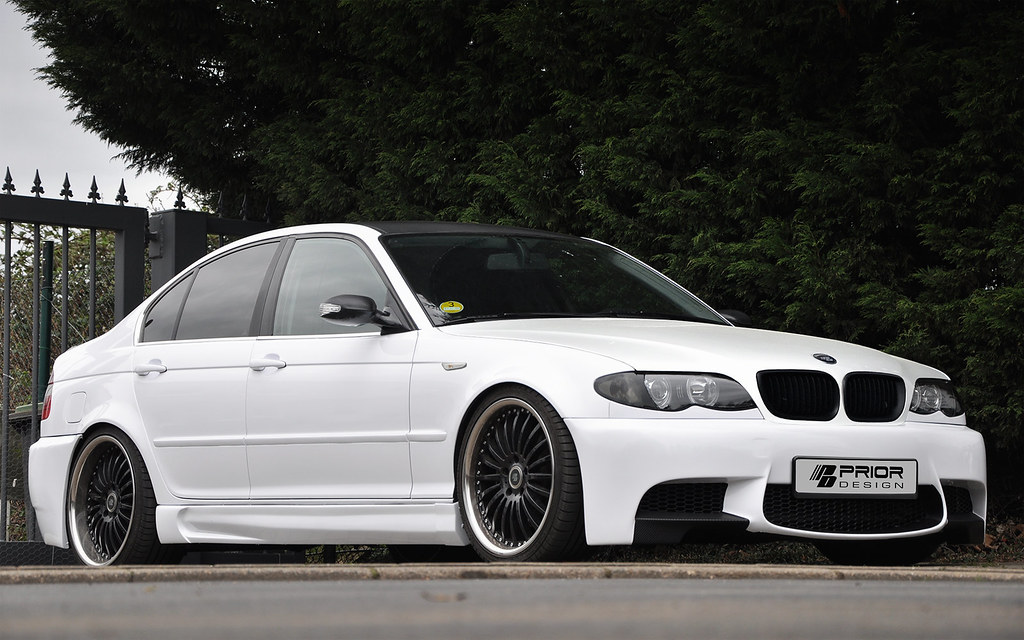
1. BMW 3 Series
The BMW 3 Series. For years, this epitome of German engineering, a sleek, performance-oriented machine, has been inextricably linked with aggressive road behavior. Owners are frequently stereotyped as habitual tailgaters, masters of weaving through traffic at eye-watering speeds, perpetually in a hurry to arrive at their destination. This image has permeated public consciousness so deeply that merely spotting one can trigger a subtle clenching of the jaw and an anticipatory sigh from many a fellow motorist.
The inherent irony, a point often lost in the heat of road rage, is that the 3 Series is fundamentally engineered for performance and driver engagement. It offers a taut suspension, precise steering, and a powerful engine that truly makes it a pleasure to pilot. However, “with great automotive power sometimes comes great disregard for others,” at least in the exasperated eyes of those sharing public thoroughfares. Its drivers are frequently singled out and blamed for pushing the limits, treating the daily commute less like a shared experience and more like their own personal time trial. This stereotype has hardened over countless frustrating, blinker-less encounters.
This reputation, sadly, precedes the car so strongly that jokes about “BMW turn signals” have long been common currency, not just on the internet, but in real-world conversations. The running gag humorously suggests that BMW drivers are either unaware their vehicles possess such a basic feature, or deem its use beneath their perceived status. Love them or hate them – and many seem to do the latter – 3 Series drivers rarely go unnoticed. They often leave a distinct trail of exasperated sighs and muttered expletives in their spirited wake. It’s a tough stereotype to shake, casting a long shadow even over the most courteous BMW owners.
Car Model Information: 2018 Acura MDX 3.5L w/Technology Package
Name: BMW 3 Series
Manufacturer: BMW
Production: 1975–present
Class: Compact executive car
Predecessor: BMW 02 Series
Categories: 1970s cars, 1980s cars, 1990s cars, 2000s cars, 2010s cars
Summary: The BMW 3 series is a line of compact executive cars manufactured by the German automaker BMW since May 1975. It is the successor to the 02 series and has been produced in seven generations.
The first generation of the 3 Series was only available as a 2-door saloon; the model range expanded to include a 4-door saloon, 2-door convertible, 2-door coupé, 5-door estate, 5-door liftback (“Gran Turismo”; discontinued in 2019) and 3-door hatchback body styles. Since 2013, the coupé and convertible models have been marketed as the 4 Series; these styles no longer being included in the 3 Series.
The 3 Series is BMW’s best-selling model line, accounting for around 30% of the BMW brand’s annual total car sales, and has won numerous awards throughout its history. The M version of the 3 series, M3, debuted with the E30 M3 in 1986.
Get more information about: BMW 3 Series
Buying a high-performing used car >>>
Brand: BMW Model: 3 Series
Price: $18,885 Mileage: 131,273 mi.
Read more about: Beyond the Billionaire Bling: An Insider’s Look at Warren Buffett’s 10 Unexpected Car Choices and Driving Philosophies
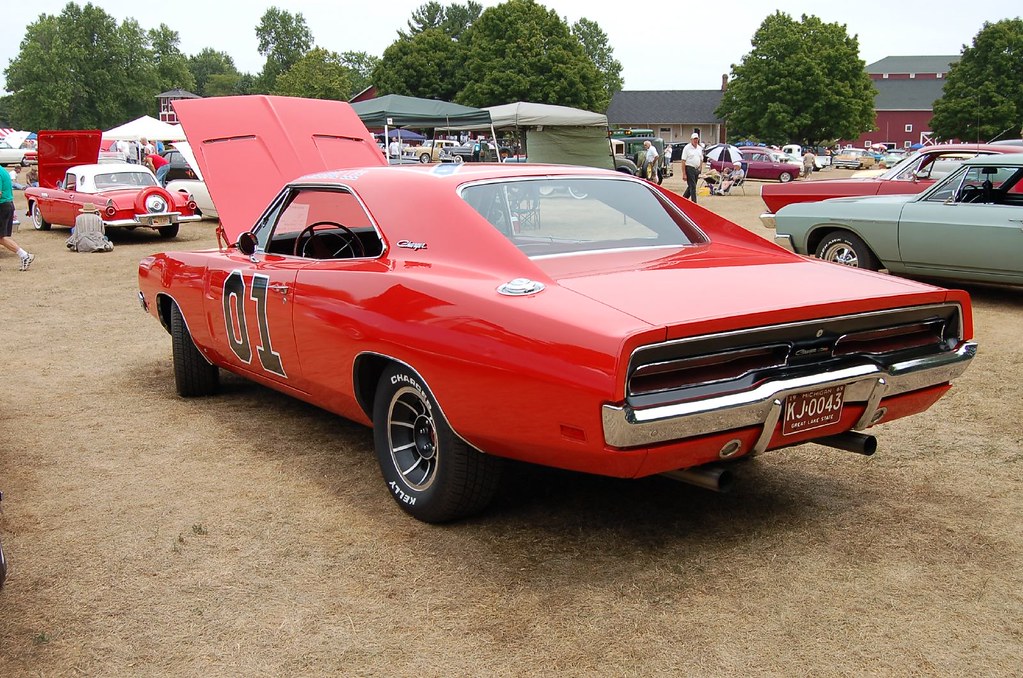
2. Dodge Charger
If the BMW 3 Series is the aggressive urban executive, then the Dodge Charger steps up as its unapologetically muscle-bound, highway-blasting cousin. Charger drivers have carved out a formidable reputation for indulging in acts like “burning rubber” and launching down highways as if they were private drag strips. This perception isn’t merely born from thin air; it’s deeply rooted in the car’s raw, unbridled power and its inherent appeal to a certain type of driver. Many people instantly associate this iconic muscle car with reckless speeding and an almost theatrical street racing behavior.
There’s an undeniable, almost magnetic allure to the sheer, unadulterated horsepower churning under the hood of a Dodge Charger. It’s a siren song for those who crave speed, the visceral roar of an engine, and the thrill of pushing the limits of what’s considered safe. Unfortunately, for many, this translates directly into a pattern of risky maneuvers that do little more than ignite profound frustration in other motorists. They often place them squarely in harm’s way. The intoxicating combination of blistering speed and the power-hungry nature of the vehicle seems to consistently bring out a more aggressive, less forgiving driving style.
Regrettably, the Charger’s potent reputation for aggressive, borderline-reckless driving often overshadows its considerable potential as a surprisingly practical sedan. Despite its muscle car prowess, it’s a vehicle capable of comfortably seating a family, boasting a spacious interior and a commanding road presence. Yet, for a significant segment of the driving public, the mere sight of a Charger in their periphery instantly conjures vivid images of screeching tires and sudden, unindicated lane changes. This perception firmly cements its place on the infamous list of vehicles disproportionately associated with terrible drivers.
Car Model Information: 2022 Dodge Charger SXT
Name: Dodge Charger
Caption: 1969 Dodge Charger
Manufacturer: Dodge
Production: 1966–1978,1981–1987,2005–present
ModelYears: 1966–1978,1982–1987,2006–present
Categories: 1960s cars, 1970s cars, 1980s cars, 2000s cars, 2010s cars
Summary: The Dodge Charger is a model of automobile marketed by Dodge in various forms over eight generations since 1966.
The first Charger was a show car in 1964. A 1965 Charger II concept car resembled the 1966 production version.
In the United States, the Charger nameplate has been used on mid-size cars, personal luxury coupes, subcompact hatchbacks, and full-size sedans.
Get more information about: Dodge Charger
Buying a high-performing used car >>>
Brand: Dodge Model: Charger
Price: $19,987 Mileage: 37,151 mi.
Read more about: 12 Cars That Made Drivers Say ‘Nope, Not Again!’ – Your Ultimate Guide to Avoiding Instant Regret on Wheels
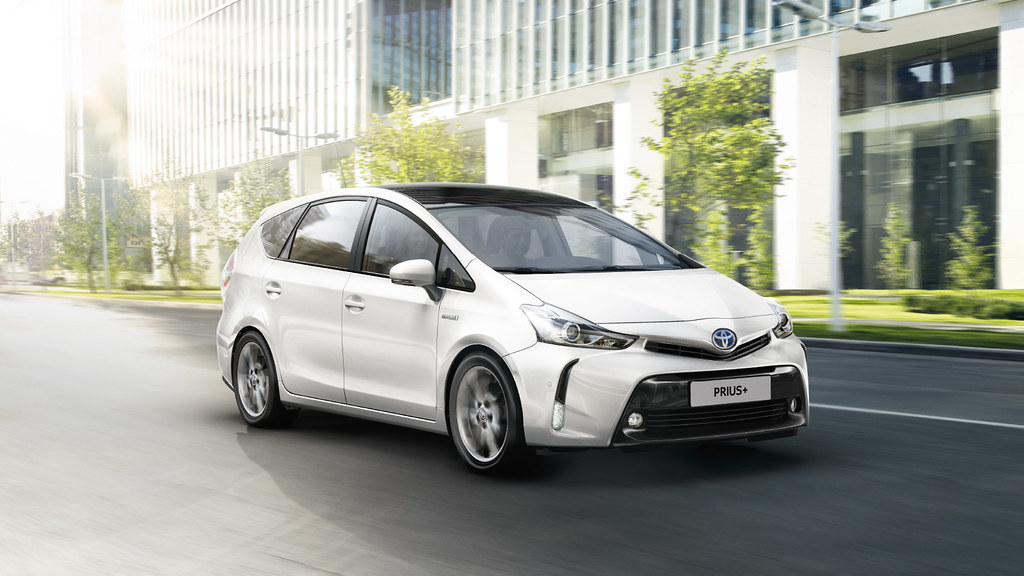
3. Toyota Prius
Let’s execute a dramatic U-turn from the high-octane aggressors and pivot sharply to the complete opposite end of the driving spectrum: the Toyota Prius. While BMWs and Chargers dominate the headlines for speed and recklessness, Prius drivers have cemented their infamy for an entirely different, yet equally frustrating, flavor of road nuisance: persistently slow, overly hesitant, and often bafflingly cautious driving. The hybrid’s widely lauded eco-friendly appeal seems to act as a powerful magnet for motorists who prioritize hypermiling and environmental consciousness, often at the perceived expense of harmonious traffic flow.
The chorus of complaints from exasperated drivers regarding Prius owners is both widespread and remarkably consistent. They are often accused of inexplicably clogging up the fast lanes, cruising at speeds significantly below the posted limit, or, perhaps most irritatingly, engaging in sudden and unnecessary braking. This creates a cascading ripple effect of frustration and potential hazards for everyone trailing behind. It’s almost as if the car’s admirable dedication to maximizing efficiency has translated, through its drivers, into a style that meticulously prioritizes every last drop of gasoline over smooth, predictable progress.
While the vehicle itself is undeniably a marvel of engineering – incredibly efficient, notoriously reliable, and a genuinely sensible choice for millions – it has, through a twist of ironic fate, become the unfortunate poster child for frustratingly slow commutes for a significant portion of the impatient driving public. The deeply ingrained stereotype suggests that while a Prius may indeed save substantial gas money for its owner, it most certainly does not save patience for anyone else sharing the congested roadways. It stands as a poignant, classic case of laudable intentions from the manufacturer leading to a rather contentious reputation.
Car Model Information: 2015 Toyota Prius Two
Name: Toyota Prius
Caption: Fifth generation Prius (XW60)
Manufacturer: Toyota
Production: December 1997 – present
ModelYears: 2001–present (US)
Class: ubl
BodyStyle: unbulleted list
Layout: unbulleted list
Sp: uk
Categories: 2000s cars, 2010s cars, 2020s cars, All-wheel-drive vehicles, All Wikipedia articles in need of updating
Summary: The Toyota Prius ( PREE-əss) (Japanese: トヨタ・プリウス, Hepburn: Toyota Puriusu) is a compact/small family liftback (supermini/subcompact sedan until 2003) produced by Toyota. The Prius has a hybrid drivetrain, which combines an internal combustion engine and an electric motor. Initially offered as a four-door sedan, it has been produced only as a five-door liftback since 2003.
The Prius was developed by Toyota to be the “car for the 21st century”; it was the first mass-produced hybrid vehicle, first going on sale in Japan in 1997 at all four Toyota Japan dealership chains, and subsequently introduced worldwide in 2000.
In 2011, Toyota expanded the Prius family to include the Prius v, an MPV, and the Prius c, a subcompact hatchback. The production version of the Prius plug-in hybrid was released in 2012. The second generation of the plug-in variant, the Prius Prime, was released in the U.S. in November 2016. The Prius family totaled global cumulative sales of 6.1 million units in January 2017, representing 61% of the 10 million hybrids sold worldwide by Toyota since 1997. Toyota sells the Prius in over 90 markets, with Japan and the United States being its largest markets.
Get more information about: Toyota Prius
Buying a high-performing used car >>>
Brand: Toyota Model: Prius
Price: $8,995 Mileage: 139,989 mi.
Read more about: The Automotive Hall of Shame: 15 Infamous Rides and Their Reputations for Bad Drivers and Dangerous Flaws
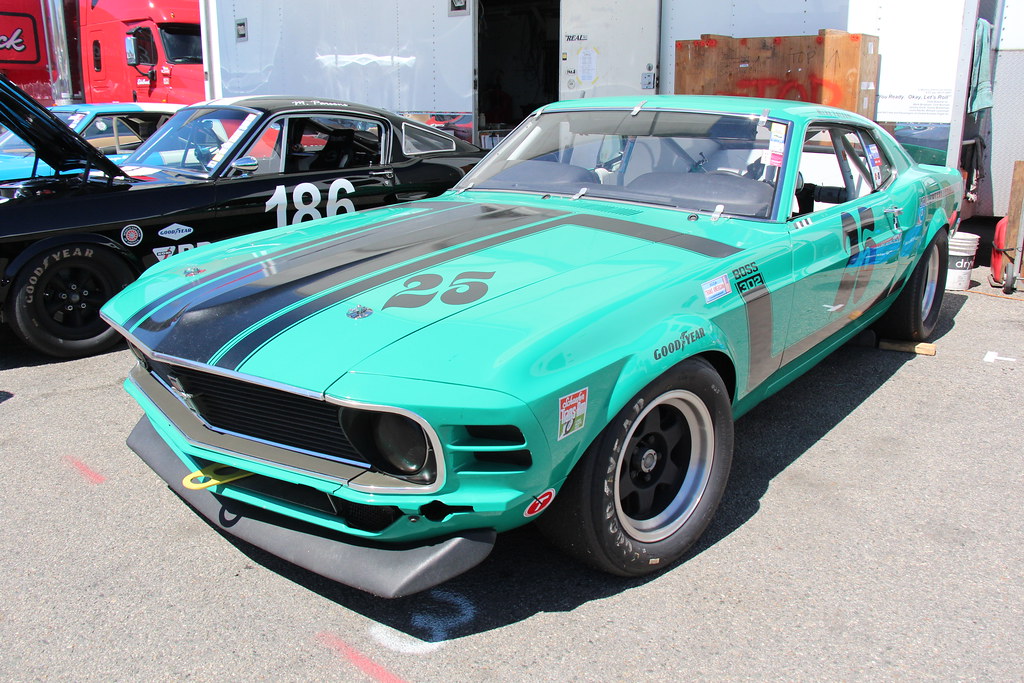
4. Ford Mustang
The Ford Mustang, a quintessential icon of American muscle, raw power, and an undeniable spirit of freedom, finds itself tragically intertwined with the specter of reckless driving, often driven by the desire for showboating. Mustang owners, particularly those who frequent car meets or gather at local automotive hangouts, have, regrettably, garnered notoriety for spectacularly losing control during ill-advised attempts at crowd-pleasing stunts or dramatic, tire-smoking burnouts. It’s a powerful, rear-wheel-drive machine, and that inherent power, combined with an eager desire to impress an audience, can frequently lead to disastrous and widely broadcasted consequences.
Indeed, the digital landscape is saturated with viral videos depicting Mustangs spinning out, careening into curbs, or crashing spectacularly at various car-centric gatherings. These unfortunate, yet highly visible, incidents have done little to dispel the burgeoning stereotype; instead, they have cemented the Mustang’s reputation for a kind of dangerous overconfidence and a perceived inability to manage the car’s prodigious power. The intoxicating allure of the roaring V8 engine and the raw, untamed spirit of the car seems to actively encourage some drivers to relentlessly push the limits far beyond what is considered safe or responsible.
It is, of course, absolutely crucial to acknowledge that an overwhelming number of Mustang owners drive their cherished vehicles with exemplary responsibility. However, the highly visible, often spectacular, actions of a small contingent of “bad apples” have, regrettably, cast a disproportionately large and negative shadow over the entire Mustang community. Spotting one revving loudly and ostentatiously next to you at a stoplight often triggers an immediate red flag, instantly pre-loading an assumption of impending, ill-advised shenanigans. This might be profoundly unfair to the responsible majority, but the pervasive stereotype stubbornly persists, casting a long, somewhat unflattering shadow over one of America’s most beloved sports cars.
Car Model Information: 2024 Ford Mustang GT Premium
Name: Ford Mustang
Caption: 2024 Ford Mustang GT Convertible
Aka: Ford T5 (Germany)
Manufacturer: Ford Motor Company
Production: March 1964 – present
ModelYears: 1965–present
Class: Unbulleted list
BodyStyle: Unbulleted list
Layout: Front-engine, rear-wheel-drive layout
Categories: 1970s cars, 1980s cars, 1990s cars, 2+2 coupés, 2000s cars
Summary: The Ford Mustang is an American automobile manufactured and marketed by Ford since 1964, as Ford’s longest nameplate in continuous production. Currently in its seventh generation, it is the fifth-best selling Ford car nameplate. The namesake of the “pony car” automobile segment, the Mustang was developed as a highly styled line of sporty coupes and convertibles derived from existing model lines, initially distinguished by its pronounced “long hood, short deck” proportions.
Originally predicted to sell 100,000 vehicles yearly, the 1965 Mustang became the most successful vehicle launch since the 1927 Model A. Introduced on April 17, 1964 (16 days after the Plymouth Barracuda), over 400,000 units were sold in its first year; the one-millionth Mustang was sold within two years of its launch. In August 2018, Ford produced the 10-millionth Mustang; matching the first 1965 Mustang, the vehicle was a 2019 Wimbledon White convertible with a V8 engine.
The success of the Mustang launch led to multiple competitors from other American manufacturers, including the Chevrolet Camaro and Pontiac Firebird (1967), AMC Javelin (1968), and Dodge Challenger (1970). It also competed with the Plymouth Barracuda, which was launched around the same time. The Mustang also had an effect on designs of coupes worldwide, leading to the marketing of the Toyota Celica and Ford Capri in the United States (the latter, by Lincoln-Mercury). The Mercury Cougar was launched in 1967 as a unique-bodied higher-trim alternative to the Mustang; during the 1970s, it included more features and was marketed as a personal luxury car.
From 1965 until 2004, the Mustang shared chassis commonality with other Ford model lines, staying rear-wheel-drive throughout its production. From 1965 to 1973, the Mustang was derived from the 1960 Ford Falcon compact. From 1974 until 1978, the Mustang (denoted Mustang II) was a longer-wheelbase version of the Ford Pinto. From 1979 until 2004, the Mustang shared its Fox platform chassis with 14 other Ford vehicles (becoming the final one to use the Fox architecture). Since 2005, Ford has produced two generations of the Mustang, each using a distinct platform unique to the model line.
Through its production, multiple nameplates have been associated with the Ford Mustang series, including GT, Mach 1, Boss 302/429, Cobra (separate from Shelby Cobra), and Bullitt, along with “5.0” fender badging (denoting 4.9 L OHV or 5.0 L DOHC V8 engines).
Get more information about: Ford Mustang
Buying a high-performing used car >>>
Brand: Ford Model: Mustang
Price: $43,950 Mileage: 19,565 mi.
Read more about: 14 Classic Rides That Boomers Loved But Millennials and Gen Z Just Can’t Stand: Unpacking Why These Iconic Cars Fail to Appeal Now
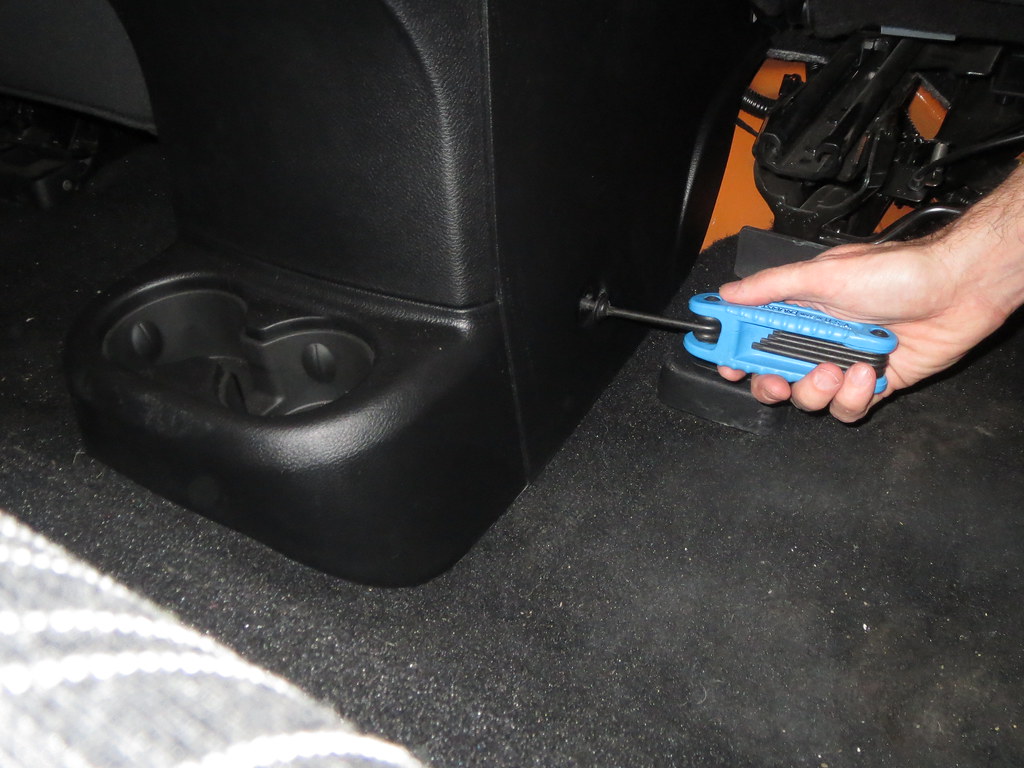
5. Jeep Wrangler
Shifting gears once more, we arrive at the rugged, iconic Jeep Wrangler, a vehicle designed for traversing unforgiving terrain and embodying an adventurous spirit. Yet, it finds itself frequently criticized for its drivers’ peculiar lack of conventional road manners when navigating paved streets. The Wrangler’s distinctive, go-anywhere design appears to inspire a subset of its owners to approach public roads and bustling highways with the same free-spirited, often chaotic, approach they might confidently adopt on an off-road trail. This mindset can frequently lead to an unconventional and often jarring driving experience for those sharing the road with them.
Many of the popular visual and functional modifications favored by dedicated Wrangler owners – such as aggressively oversized tires, dramatically lifted suspensions, and wide stance kits – while unequivocally perfect for conquering boulder fields, can, ironically, contribute to unique and challenging handling characteristics on smooth asphalt. Lane drifting becomes a more commonly observed sight, and the vehicle’s inherent design, prioritizing extreme off-road capability, doesn’t always translate into stable or precise handling at higher highway speeds. These inherent characteristics, combined with a perceived casualness towards road rules, only serve to further fuel the deeply ingrained stereotype of the carefree—yet frequently careless—Wrangler driver.
It stands as a powerful testament to the Wrangler’s enduring cultural appeal that its drivers often embody a palpable sense of freedom, rugged individualism, and an adventurous spirit. However, for a considerable number of everyday motorists, this admirable spirit regrettably translates into a perception of unpredictable, often inconsiderate, behavior on the road. From what appear to be arbitrary corner-cutting maneuvers to seemingly treating rumble strips as personal challenges, Wrangler drivers frequently find themselves the unwitting subjects of headshakes and exasperated honks. It’s a vehicle that inspires immense passion and loyalty, but sometimes, that passion appears to extend to an informal interpretation of established traffic laws.
Car Model Information: 2017 Jeep Wrangler Unlimited Sport
Name: Jeep Wrangler
Caption: Jeep Wrangler Unlimited, Sahara edition
Manufacturer: Jeep
Class: Compact SUV
Production: 1986–present
Predecessor: Jeep CJ
Layout: Front-engine, rear-wheel-drive layout,rear-wheel drive
Chassis: Body-on-frame
Related: AIL Storm
Categories: 1980s cars, 1990s cars, 2000s cars, 2010s cars, All-wheel-drive vehicles
Summary: The Jeep Wrangler is a series of compact and mid-size four-wheel drive off-road SUVs manufactured by Jeep since 1986, and currently in its fourth generation. The Wrangler JL, the most recent generation, was unveiled in late 2017 and is produced at Jeep’s Toledo Complex.
The Wrangler is a direct progression from the World War II Jeep, through the CJ (Civilian Jeeps) produced by Willys, Kaiser-Jeep, and American Motors Corporation (AMC) from the mid-1940s through the 1980s. Although neither AMC nor Chrysler (after it purchased AMC in 1987) have claimed that the Wrangler was a direct descendant of the original military model — both the CJ Jeeps and the conceptually consistent Wrangler, with their solid axles and open top, have been called the Jeep model as central to Jeep’s brand identity as the rear-engine 911 is to Porsche.
Similar to the Willys MB and the CJ Jeeps before it, all Wrangler models continue to use a separate body and frame, rigid live axles both front and rear, a tapering nose design with flared fenders, a fold-flat windshield and can be driven without doors. Also, with few exceptions, they have part-time four-wheel drive systems, with the choice of high and low gearing, and standard open bodies with removable hard or soft tops. However, the Wrangler series was specifically redesigned to be safer and more comfortable on-road, to attract more daily drivers, by upgrading its suspension, drivetrain, and interior, compared to the CJ line. The suspension on all Wranglers included trackbars and anti-roll bars, and, from the 1997 TJ onwards, front and rear coil springs instead of the previous leaf springs.
From 2004 on, the Wrangler has been complemented with long-wheelbase versions, called Wrangler Unlimited. 2004-2006 models were longer versions with 2 doors. In 2004 only automatic transmission-equipped “Unlimited” versions were sold. In 2005 both an automatic and manual 6-speed (NSG-370) were offered. Since 2007, the long-wheelbase Wranglers were four-door models, offering over 20 in (508 mm) more room. By mid-2017 the four-door models represented three-quarters of all new Wranglers on the market.
Get more information about: Jeep Wrangler
Buying a high-performing used car >>>
Brand: Jeep Model: Wrangler
Price: $20,725 Mileage: 111,103 mi.
Read more about: 12 Cars That Made Drivers Say ‘Nope, Not Again!’ – Your Ultimate Guide to Avoiding Instant Regret on Wheels
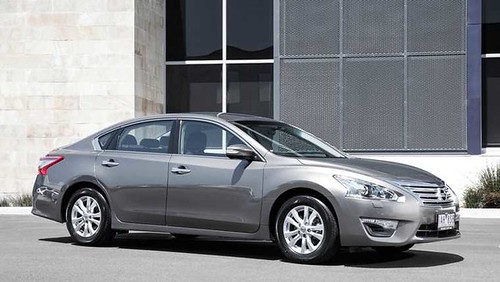
6. Nissan Altima
Among the pantheon of cars associated with challenging drivers, perhaps one of the most surprising—and fiercely debated—entries is the unassuming Nissan Altima. This seemingly innocuous sedan has, against all odds, inexplicably developed a truly terrible and remarkably widespread reputation among other motorists. Often humorously referred to as the “unofficial car of bad drivers,” it’s become linked with a broad spectrum of undesirable on-road behaviors. These include habitual speeding, aggressively close tailgating, and a general, pervasive sense of recklessness that permeates its driving style. It’s a stereotype that has permeated online car communities and countless real-world conversations with an almost viral vigor.
A significant, though perhaps less obvious, reason this particular stereotype has taken such firm root might be attributed to the Altima’s sheer, undeniable ubiquity. Its reputation for affordability, combined with its widespread availability, means that it is simply everywhere on our roads, from bustling urban centers to quiet suburban streets. This high prevalence means that negative experiences with Altima drivers become statistically more common, or at the very least, more frequently observed and discussed. When you encounter a specific car model consistently involved in countless frustrating incidents, the mental association begins to form, slowly but surely solidifying over time into an unshakeable stereotype.
Social media, in particular, has proven to be an incredibly potent catalyst in fueling the Altima’s now-infamous image, with countless memes and viral videos mocking its drivers for everything from perpetually dangling bumper covers to bafflingly erratic lane changes. Fair or not, this digital echo chamber has amplified and cemented the stereotype in the collective minds of millions of drivers. So, the next time you spot an Altima zipping aggressively or tailgating closely in your rearview mirror, know that you’re absolutely not alone in whatever sigh or muttered comment might escape your lips – it’s a shared cultural experience for many.
Car Model Information: 2023 Nissan Altima SR FWD
Name: Nissan Altima
Caption: 2024 Nissan Altima SR (L34; US)
Manufacturer: Nissan
Aka: Nissan Bluebird
Production: 1992–present
Class: Compact car
Predecessor: Nissan Bluebird,Nissan Stanza
ModelYears: 1993–present
Categories: 2000s cars, 2010s cars, 2020s cars, All-wheel-drive vehicles, All Wikipedia articles written in American English
Summary: The Nissan Altima is a mid-size car manufactured by Nissan since 1992. It is a continuation of the Nissan Bluebird line, which began in 1955.
The Altima has historically been larger, more powerful, and more luxurious than the Nissan Sentra but less so than the Nissan Maxima. The first through fourth-generation cars were manufactured exclusively in the United States and officially sold in North and South America, along with the Middle East and Australia. For other markets, Nissan sold a related mid-size sedan called the Nissan Teana which was between the Altima and Maxima in terms of size. In 2013, the Teana became a rebadged version of the fifth-generation Altima.
The name “Altima” was originally applied to a top trim line of the Nissan Leopard for the Japanese market in 1986, and then to the Nissan Laurel Altima mid-size car sold in Central America and the Caribbean before 1992. In 1992, Nissan discontinued the Stanza which was a Nissan Bluebird clone, replacing it with the US-built Altima, while remaining a compact car. The first Altima was produced in June 1992, as a 1993 model. All Altima models for the North American market were built in Smyrna, Tennessee, until June 2004, when Nissan’s Canton, Mississippi plant also began producing the model to meet high demand.
Get more information about: Nissan Altima
Buying a high-performing used car >>>
Brand: Nissan Model: Altima
Price: $20,500 Mileage: 33,732 mi.
Read more about: 12 Cars That Made Drivers Say ‘Nope, Not Again!’ – Your Ultimate Guide to Avoiding Instant Regret on Wheels
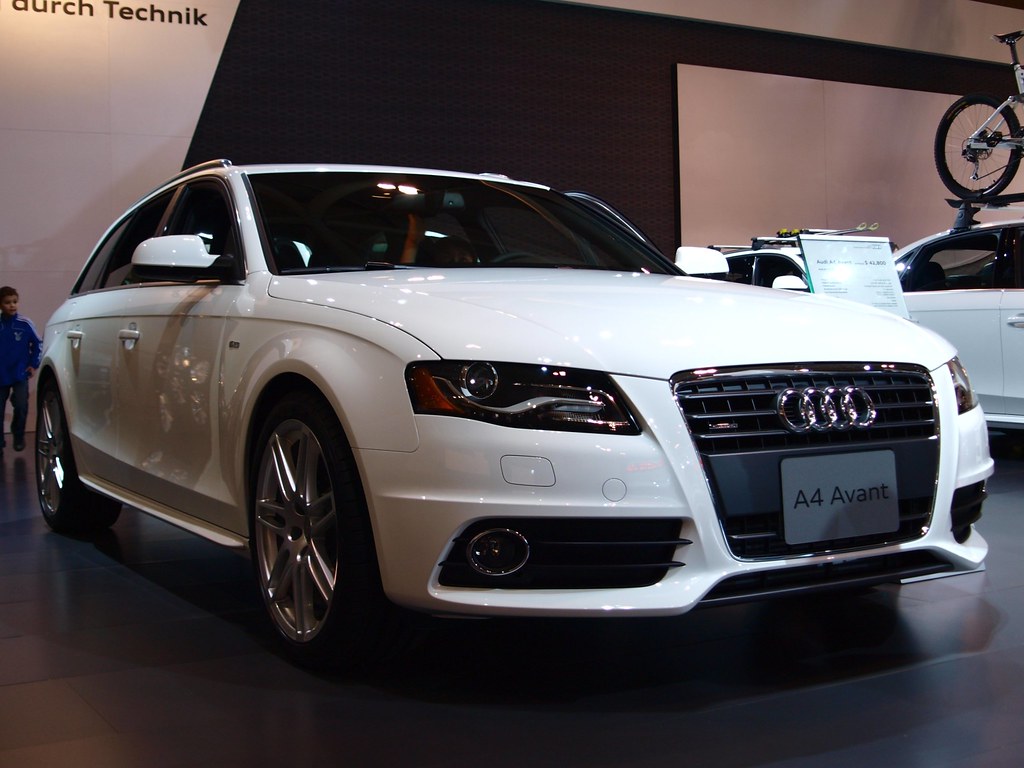
7. Audi A4
Rounding out our initial exploration into the fascinating world of driver stereotypes, we arrive at the elegant Audi A4, a luxury sedan whose drivers often, and somewhat unfortunately, share a remarkably similar—and equally frustrating—reputation with their BMW counterparts. These drivers are frequently perceived as being in a perpetual state of urgency, perpetually in a hurry, regardless of the prevailing traffic conditions. They often carry an almost palpable air of importance that subtly suggests that the road ahead should simply clear itself, as if by divine right, for their swift and unimpeded passage. It’s a classic case of luxury branding colliding head-on with a less-than-luxurious or courteous driving demeanor.
The deeply ingrained stereotype surrounding Audi A4 drivers typically includes a repertoire of abrupt, decisive lane changes, often executed with a confident, almost arrogant, disregard for the safety of other motorists. And, as is almost predictably the case within this particular segment, there is a notable, sometimes infuriating, absence of turn signal usage. It’s as if the unwritten rule for drivers of these prestigious luxury sedans is that indicators are merely decorative suggestions, or perhaps even entirely unnecessary accessories for those who operate at a higher echelon of road awareness. This pervasive perception of inherent impatience and perceived entitlement is a common thread that regrettably weaves its way through much of the luxury sedan category.
While the Audi A4 itself is, without question, an undeniably stylish, exceptionally capable, and meticulously engineered automobile, it has, through a twist of social perception, unfortunately become shorthand for impatient, fast-paced, and sometimes overtly aggressive driving. Many motorists find themselves instinctively rolling their eyes or mentally steeling themselves when an A4 appears suddenly in their traffic lane, anticipating a sudden cut-off or a general disruption to the smooth flow of traffic. It’s an incredibly challenging position for a premium brand like Audi, as the inherent quality and aesthetic appeal of their vehicles are all too often overshadowed by the deeply entrenched—and frequently negative—perceptions of the driving habits of those who choose to command them on our shared roadways.
Car Model Information: 2015 Audi A4 2.0T Premium
Name: Audi A4
Caption: Audi A4 (B9.5; facelift)
Manufacturer: Audi AG
Production: 1994–2025
Assembly: Germany,India,China,Indonesia,Ukraine
Class: Compact executive car
BodyStyle: Sedan (car)
Platform: Volkswagen Group B platform
Layout: Front-engine, front-wheel drive layout
Sp: uk
Predecessor: Audi 80
Successor: Audi A5#Third generation (2024)
Categories: 2000s cars, 2010s cars, 2020s cars, All-wheel-drive vehicles, All articles lacking reliable references
Summary: The Audi A4 is a line of luxury compact executive cars produced from 1994 to 2025 by the German car manufacturer Audi, a subsidiary of the Volkswagen Group. The A4 has been built in five generations and is based on the Volkswagen Group B platform. The first generation A4 succeeded the Audi 80. The automaker’s internal numbering treats the A4 as a continuation of the Audi 80 lineage, with the initial A4 designated as the B5-series, followed by the B6, B7, B8, and the B9.
The B8 and B9 versions of the A4 are built on the Volkswagen Group MLB platform shared with several models and brands across the Volkswagen Group. The Audi A4 automobile layout consists of a front-engine design, with transaxle-type transmissions mounted at the rear of the engine. The cars are front-wheel drive, or on some models, “quattro” all-wheel drive. The A4 is available as a sedan and station wagon. Historically, the second (B6) and third generations (B7) of the A4 also included a convertible version. For the B8 and B9 versions, the convertible, along with a new coupé and 5-door liftback variant, was spun-off by Audi into a new nameplate called the Audi A5.
The B9 generation A4 and A5 will be replaced by B10 version of A5, as part of Audi’s new naming convention.
Get more information about: Audi A4
Buying a high-performing used car >>>
Brand: Audi Model: A4
Price: $11,379 Mileage: 98,606 mi.
Read more about: Beyond the Pitch: David Beckham’s Coveted 1o-Car Collection — A Masterclass in Automotive Luxury and Style
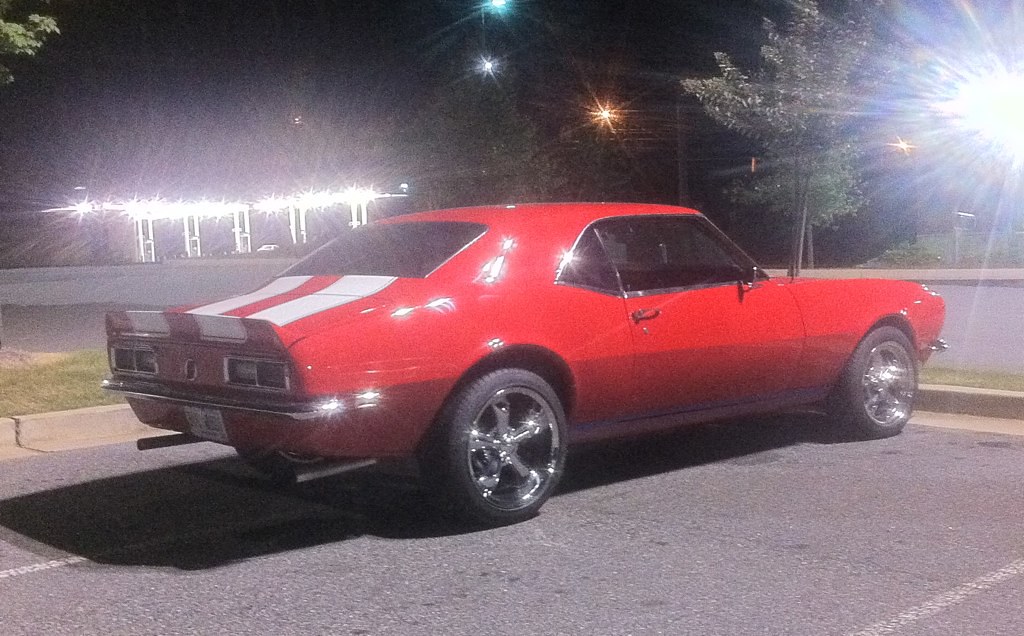
8. Chevy Camaro
After dissecting the nuances of luxury road hogs and eco-conscious traffic clogs, we swing back to the raw, unadulterated power segment with the Chevy Camaro. This quintessential American muscle car, much like its rivals the Mustang and Charger, often finds its drivers stereotyped into a rather familiar, high-octane mold. The mere sight of its aggressive stance or the distinctive rumble of its engine seems to ignite an instant assumption: “Here comes someone with a serious need for speed.” It’s a perception deeply ingrained in car culture, suggesting a propensity for pushing limits and treating public thoroughfares as personal proving grounds.
The Camaro’s powerful engine and sporty aesthetics are undeniably a huge part of its appeal, drawing in enthusiasts who crave exhilaration and a visceral connection to the road. Unfortunately, this inherent design, coupled with its muscle car image, frequently encourages — or at least, is perceived to encourage — aggressive driving styles. We’re talking about everything from impromptu drag races at stoplights to dramatic, tire-squealing displays of power. These kinds of maneuvers, while perhaps thrilling for the driver, are often nothing short of alarming and frustrating for everyone else sharing the asphalt.
It’s a tough break for the many responsible Camaro owners out there, as the actions of a visible few have undeniably colored the public’s perception. Even if the vast majority of Camaro drivers navigate the roads with perfect decorum, the pervasive stereotype is incredibly difficult to shake. The car’s loud engine, a feature often celebrated by its fans, regrettably adds more fuel to this already potent image, practically announcing its arrival with a roar that seems to echo its driver’s supposed “need for speed” mentality. This makes the Camaro a prime candidate for a collective sigh of anticipation from fellow motorists.
Read more about: Old School Cool: 10 Cars From the Fabulous ’50s That Still Stop Traffic and Steal Hearts

9. Mercedes-Benz C-Class
Transitioning from the raw power of muscle cars, we now turn our attention to the esteemed world of luxury sedans, where one might expect a higher degree of road etiquette. Yet, the Mercedes-Benz C-Class, a paragon of German luxury and refinement, has regrettably found itself embroiled in its own unique set of “bad driver” stereotypes. It’s a classic, almost predictable, narrative: the luxury badge, instead of inspiring courtesy, often seems to be associated with an air of entitlement and, dare we say, arrogance behind the wheel. It’s a perceived disconnect between the car’s premium status and its driver’s on-road demeanor.
Drivers of the C-Class are frequently accused of a range of inconsiderate actions, from the irritatingly mundane to the genuinely hazardous. Picture this: a quick, unindicated cut-off in traffic, or perhaps a rather audacious parking job that completely disregards marked lines or even common courtesy. These aren’t isolated incidents in the collective consciousness; they form a pattern that contributes to the “luxury car ego” image, a perception that owners of high-end vehicles feel they are somehow above the standard rules of the road. It’s an unfortunate side effect of status symbols, a perceived expectation that the asphalt should simply part for them.
This stereotype places the Mercedes-Benz C-Class in a similar, unenviable category as its luxury brethren, the BMW and Audi. For many observers, the car becomes less about its sophisticated engineering or plush interiors, and more about what its driver *might* do next. It’s a symbol that, for a significant portion of the driving public, has become synonymous with inconsiderate behavior, reinforcing the idea that possessing a premium vehicle sometimes comes with a disproportionate sense of self-importance. In the eyes of exasperated commuters, the C-Class is, regrettably, just another symbol of bad driving behavior.
Read more about: Decoding the Dream: 14 Affordable Classic Cars That Are a Joy to Own and Maintain for Every Enthusiast
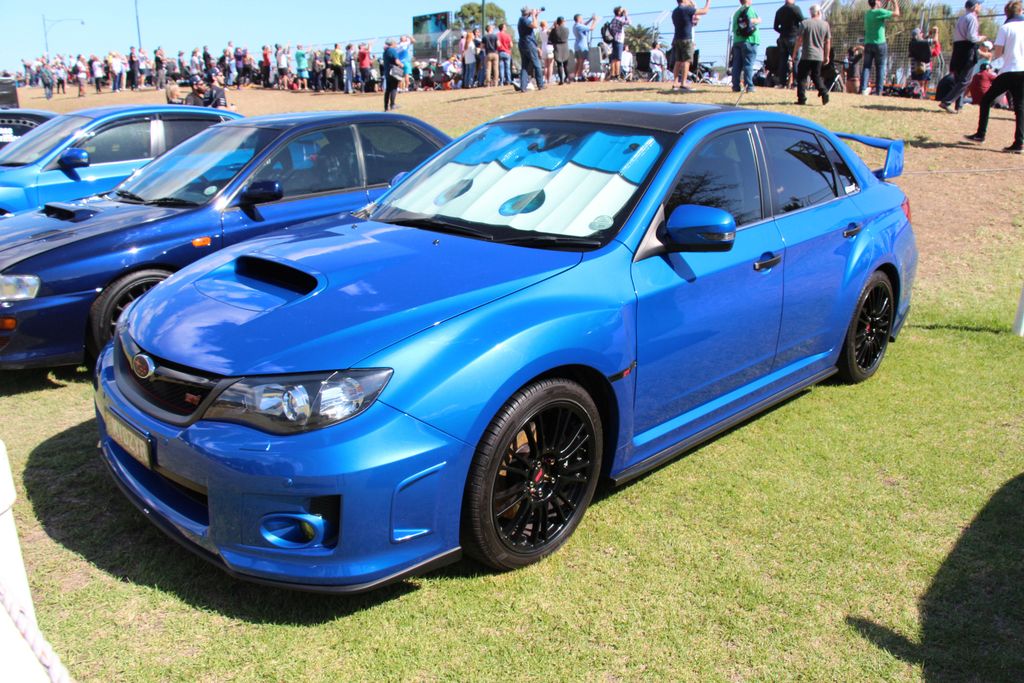
10. Subaru WRX
Now, let’s talk about a car that occupies a very specific, passionate niche within the automotive world: the Subaru WRX. This turbocharged, all-wheel-drive machine, with its undeniable rally heritage, commands a fiercely loyal cult following among car enthusiasts. However, for all its performance credentials and fan devotion, the WRX regrettably also carries a rather pronounced “reckless driver” stereotype. It’s a car that, by its very design and marketing, seems to scream “performance,” attracting a demographic often eager to explore the limits of both the vehicle and the law.
The WRX’s powerful turbocharged engine and its legendary grip, derived from its rally-bred roots, make it an absolute thrill to drive. This intoxicating blend of speed and handling, however, can be a double-edged sword. While it allows for incredible driving dynamics, it also tends to attract younger drivers and enthusiasts who are sometimes a bit *too* eager to push those limits on public roads. This often translates, in the eyes of other motorists, into behaviors like excessive speeding, aggressive cornering, and generally treating everyday streets as if they were special stages of a rally course.
It’s important to acknowledge that not every WRX owner fits this mold; indeed, many are responsible, dedicated enthusiasts who respect the rules of the road. Yet, the actions of a visible subset have been impactful enough to firmly cement the car’s reputation. When a WRX zips past, accelerating aggressively out of a turn, onlookers often jump to conclusions, assuming the driver is intent on testing the car’s capabilities to the very edge. This makes the Subaru WRX an iconic example of how a car’s performance pedigree can, ironically, contribute to a less-than-stellar public image for its drivers.
Car Model Information: 2022 Subaru WRX Limited
Name: Subaru WRX
Caption: 2022 Subaru WRX GT
Aka: Subaru Impreza WRX (1992–2014)
Production: 1992–2014 (Impreza-based models),2015–present (standalone models)
Assembly: Ōta, Gunma
Layout: Front-engine, four-wheel-drive layout
Manufacturer: Subaru
Related: Subaru Levorg,Subaru WRX STI
Class: Sport compact
BodyStyle: Sedan (automobile)
Categories: 2020s cars, All-wheel-drive vehicles, All articles with unsourced statements, Articles with short description, Articles with unsourced statements from August 2020
Summary: The Subaru WRX is an all-wheel drive sport compact car manufactured by the Japanese automaker Subaru, originally based on the Impreza created for the World Rally Championship in 1992. Subaru claimed the name WRX stands for “World Rally eXperimental”. Starting with the 2015 models, the WRX lineup has been split from the Impreza, with a different body style that is not offered as an optional hatchback/wagon, being introduced as the separate Levorg model.
Get more information about: Subaru WRX
Buying a high-performing used car >>>
Brand: Subaru Model: WRX
Price: $27,741 Mileage: 35,004 mi.
Read more about: The Automotive Hall of Shame: 15 Infamous Rides and Their Reputations for Bad Drivers and Dangerous Flaws
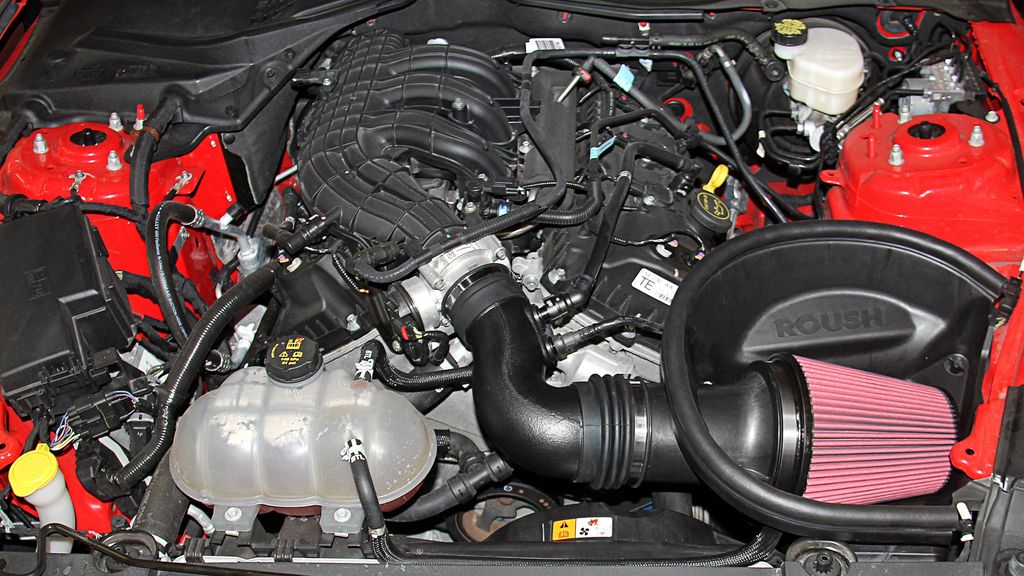
11. Baby-Blue V6 Mustang Convertibles (Rental Cars)
Shifting focus from brand-specific generalities, we delve into a highly specific subset that often elicits an immediate sense of dread: the baby-blue V6 Mustang convertible, particularly when it’s a rental car. This isn’t just about a Mustang (which already has its own stereotype for showboating); it’s about the potent combination of a powerful, attention-grabbing vehicle in the hands of someone who likely has minimal investment in its well-being, and potentially, even less familiarity with the local roadways. The phrase “Avoid these at all costs” from the context speaks volumes.
The core of the “bad driver” stereotype here isn’t necessarily the car itself, but the temporary nature of its ownership. Rental cars, by their very definition, are driven by individuals who are often unfamiliar with the vehicle’s dynamics and, more critically, may feel a distinct lack of long-term responsibility for its condition or the consequences of their actions. The context explicitly states, “The driver is usually looking at anything but the road, has no clue where they are and has a general disregard for the well-being of the car.” This paints a vivid picture of distracted, disoriented, and potentially dangerous driving.
This particular Mustang variant, often chosen for its “fun” factor during vacations or special occasions, seems to amplify these issues. The V6 engine offers enough power to be a handful, especially for inexperienced drivers, and the convertible top encourages a carefree attitude that can sometimes spill over into recklessness. The lack of familiarity with surroundings, combined with a car that’s “not theirs,” creates a perfect storm for erratic lane changes, sudden braking, and a general unpredictable nature that makes fellow motorists understandably wary. It’s a stereotype born from repeated, frustrating encounters with drivers who are mentally on holiday, but physically on your shared commute.
Car Model Information: 2024 Ford Mustang GT Premium
Name: Ford Mustang
Caption: 2024 Ford Mustang GT Convertible
Aka: Ford T5 (Germany)
Manufacturer: Ford Motor Company
Production: March 1964 – present
ModelYears: 1965–present
Class: Unbulleted list
BodyStyle: Unbulleted list
Layout: Front-engine, rear-wheel-drive layout
Categories: 1970s cars, 1980s cars, 1990s cars, 2+2 coupés, 2000s cars
Summary: The Ford Mustang is an American automobile manufactured and marketed by Ford since 1964, as Ford’s longest nameplate in continuous production. Currently in its seventh generation, it is the fifth-best selling Ford car nameplate. The namesake of the “pony car” automobile segment, the Mustang was developed as a highly styled line of sporty coupes and convertibles derived from existing model lines, initially distinguished by its pronounced “long hood, short deck” proportions.
Originally predicted to sell 100,000 vehicles yearly, the 1965 Mustang became the most successful vehicle launch since the 1927 Model A. Introduced on April 17, 1964 (16 days after the Plymouth Barracuda), over 400,000 units were sold in its first year; the one-millionth Mustang was sold within two years of its launch. In August 2018, Ford produced the 10-millionth Mustang; matching the first 1965 Mustang, the vehicle was a 2019 Wimbledon White convertible with a V8 engine.
The success of the Mustang launch led to multiple competitors from other American manufacturers, including the Chevrolet Camaro and Pontiac Firebird (1967), AMC Javelin (1968), and Dodge Challenger (1970). It also competed with the Plymouth Barracuda, which was launched around the same time. The Mustang also had an effect on designs of coupes worldwide, leading to the marketing of the Toyota Celica and Ford Capri in the United States (the latter, by Lincoln-Mercury). The Mercury Cougar was launched in 1967 as a unique-bodied higher-trim alternative to the Mustang; during the 1970s, it included more features and was marketed as a personal luxury car.
From 1965 until 2004, the Mustang shared chassis commonality with other Ford model lines, staying rear-wheel-drive throughout its production. From 1965 to 1973, the Mustang was derived from the 1960 Ford Falcon compact. From 1974 until 1978, the Mustang (denoted Mustang II) was a longer-wheelbase version of the Ford Pinto. From 1979 until 2004, the Mustang shared its Fox platform chassis with 14 other Ford vehicles (becoming the final one to use the Fox architecture). Since 2005, Ford has produced two generations of the Mustang, each using a distinct platform unique to the model line.
Through its production, multiple nameplates have been associated with the Ford Mustang series, including GT, Mach 1, Boss 302/429, Cobra (separate from Shelby Cobra), and Bullitt, along with “5.0” fender badging (denoting 4.9 L OHV or 5.0 L DOHC V8 engines).
Get more information about: Ford Mustang
Buying a high-performing used car >>>
Brand: Ford Model: Mustang
Price: $43,950 Mileage: 19,565 mi.
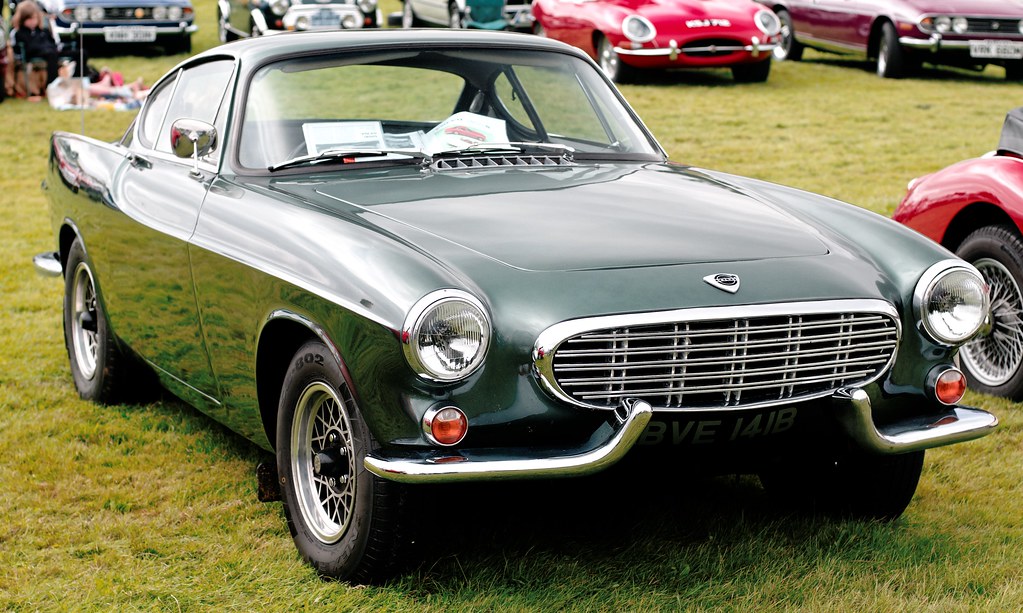
12. Volvo
Making a significant pivot from the aggressive and the carefree, we encounter the Volvo, a brand long synonymous with safety, sensibility, and an almost unwavering commitment to protecting its occupants. However, even this bastion of automotive responsibility hasn’t escaped the grasp of driver stereotypes, albeit one that contrasts sharply with the other “nuisances” on our list. Volvo drivers are often perceived not as reckless speed demons, but as the quintessential “safe pair of hands” – dependable, reliable, and loyal, yet prone to a driving style that can, paradoxically, become a source of frustration for others on the road.
The stereotype surrounding Volvo drivers paints them as individuals who prioritize caution above all else. They are often characterized as meticulously adhering to, or even exceeding, the speed limit, sometimes to the point of “always driving a few miles under the speed limit.” While admirable in principle, this hyper-cautious approach can regrettably lead to slow-moving traffic flows, especially on roads where other drivers are accustomed to a different pace. It creates a subtle, but persistent, tension, with more impatient motorists finding themselves stuck behind what they perceive as an unnecessarily deliberate pace-setter.
The context also highlights this persona: “The mum of the friendship group, you constantly carry around all the things you might ever need, because you take safety seriously.” This commitment to preparedness and safety, while positive, underscores a mindset that translates into an on-road demeanor focused intensely on avoiding risk. While they “won’t let those aggressive Audi drivers put you off,” their unwavering dedication to being “ALWAYS better to be safe than sorry” can, ironically, make them an unwitting contributor to traffic congestion and a specific kind of road frustration. They are the antithesis of the reckless, yet their driving can still be perceived as a “nuisance” by those seeking a faster, more fluid journey.
Read more about: Beyond the Mainstream: 15 Wild Classic Car Features Automakers Left in the Dust and Why You Won’t See Them Again
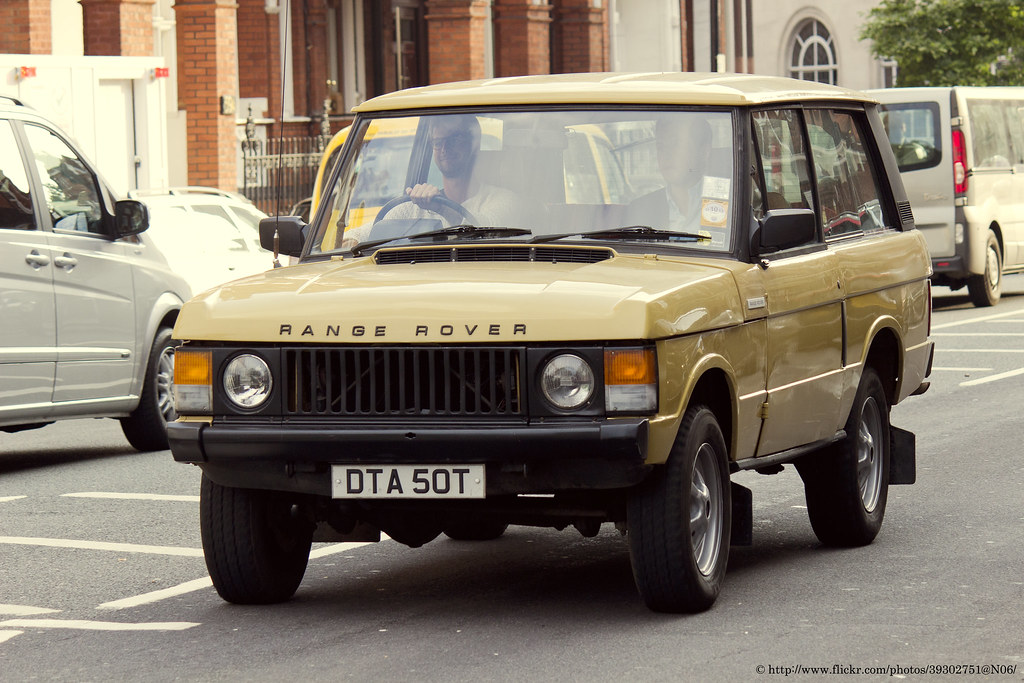
13. Range Rover
From the steadfast safety of Volvo, we ascend to a different tier of perceived driver behavior with the formidable Range Rover. This luxury SUV, a clear emblem of prosperity and an upper-middle-class lifestyle, brings with it a stereotype rooted not in reckless speed or excessive caution, but in an almost theatrical display of perceived entitlement. The Range Rover itself is a grand, imposing vehicle, and its drivers are often seen as embodying a similar, commanding presence on the road – sometimes, unfortunately, to the detriment of others.
The “Yummy Mummy” stereotype associated with Range Rover drivers is particularly illustrative. The context humorously describes them dropping off “little darlings off on the school run in your Range Rover, where you can double park by the gates.” This specific act of double parking, a clear violation of basic road etiquette and a considerable inconvenience to other parents and traffic flow, epitomizes the “nuisance” factor. It suggests a sense that personal convenience, backed by the imposing vehicle, overrides community rules or consideration for fellow citizens. It’s a subtle but impactful assertion of privilege on public property.
This behavior extends beyond mere parking. The sheer size and commanding presence of the Range Rover, combined with this perceived sense of entitlement, can lead to other subtle forms of bad driving. Perhaps it’s an expectation that others will yield, a less-than-diligent use of turn signals, or an overall demeanor that suggests the driver is in their own world. For many, the Range Rover becomes a visual shorthand for a specific kind of driver who uses their vehicle not just for transportation, but as a statement of status that sometimes translates into a disregard for conventional road manners, making them a distinctive, albeit often frustrating, presence on the road.
Car Model Information: 2020 Honda Civic Sport
Name: Range Rover (L460)
Manufacturer: Jaguar Land Rover
ModelCode: L460
Designer: Gerry McGovern
Production: 2022–present
Assembly: Solihull
Class: Full-size SUV
BodyStyle: Sport utility vehicle
Layout: Front-engine, four-wheel-drive layout
Platform: Jaguar Land Rover car platforms#MLA-Flex
Related: Range Rover Sport#L461
Engine: Petrol engine,Straight-six engine,twin-turbo,Diesel engine,3.0 L twin-turbo I6,3.0 L twin-turbo I6 MHEV,Petrol engine,3.0 L turbo I6 PHEV
Motor: ubl
Abbr: on
Drivetrain: class=nowrap,Mild hybrid,Plug-in hybrid,P510e/P550e)
Transmission: ZF 8HP transmission
Battery: Kilowatt-hour,Lithium-ion battery
Wheelbase: class=nowrap,{{convert,2997,mm,in,1,abbr=on
Length: class=nowrap,{{convert,5052,mm,in,1,abbr=on
Width: class=nowrap,{{convert,2047,mm,in,1,abbr=on
Height: 1870 mm
Weight: [object Object]
Sp: uk
Predecessor: ubl
Categories: All-wheel-drive vehicles, All articles containing potentially dated statements, All articles with unsourced statements, Articles containing potentially dated statements from 2023, Articles with short description
Summary: The Land Rover Range Rover (L460), generally shortened to Range Rover, is the fifth generation of the Range Rover, a range of mid- and full-size luxury crossovers produced by Land Rover. It was revealed in London on 26 October 2021. The car is available in two different wheelbases, and the vehicle is available in guises consisting of petrol, petrol mild hybrid, petrol plug-in hybrid, and diesel mild hybrid. A seven-seater option was available slightly after launch.
Get more information about: Range Rover (L460)
Buying a high-performing used car >>>
Brand: Range Rover Model: Range Rover
Price: $17,494 Mileage: 113,802 mi.
Read more about: Beyond the Pitch: David Beckham’s Coveted 1o-Car Collection — A Masterclass in Automotive Luxury and Style

14. Cars with Loud In-Car Entertainment Systems (Modified Cars)
Finally, we conclude our journey through the landscape of driver stereotypes by examining a category defined less by specific make or model, and more by an aesthetic and auditory modification: cars equipped with loud in-car entertainment systems. This stereotype transcends brand loyalty, focusing instead on a specific choice made by owners that, in the collective public imagination, often becomes synonymous with unruly, self-indulgent, and possibly antisocial behavior. It’s a powerful example of how personal expression, when amplified, can inadvertently create a significant road nuisance.
The drivers of these audibly conspicuous vehicles are frequently subject to immediate judgment. The perception is that the sheer volume of their music signals a profound disregard for the peace and quiet of others, particularly in residential areas or during late hours. The context specifically notes that such individuals “may be seen as unruly, self-indulgent and possibly antisocial.” This isn’t just about a preference for bass-heavy tunes; it’s interpreted as an explicit decision to impose one’s personal sonic preferences on the shared public space, leading to widespread annoyance and frustration among fellow road users and pedestrians alike.
Furthermore, the sociology research within the context highlights a deeper, more troubling aspect of car modification. While modification can be a “creative, artistic endeavour,” those who “invest emotionally and economically into the look, feel and sound of their cars are often made to feel they are problematic troublemakers.” This suggests that the loud entertainment system is often just one facet of a broader customization trend, which, especially for non-white drivers, can lead to racial profiling and assumptions of criminality. Thus, the loud car becomes a complex symbol, embodying not just a ‘nuisance’ for its noise, but also a potential trigger for prejudiced assumptions, intertwining driver behavior with broader societal biases.
As we pull to a final stop on this enlightening — and perhaps a little too relatable — tour of automotive stereotypes, it becomes vividly clear that our roads are not just conduits for travel, but stages for an ongoing, often unspoken, social commentary. From the roaring muscle cars and impatient luxury sedans to the hyper-cautious hybrids and the audibly assertive modified rides, each vehicle, through the collective experiences and perceptions of millions, gathers a narrative. While it’s always crucial to remember that the wheel belongs to the driver, not the car, these pervasive stereotypes offer a fascinating, sometimes frustrating, and undeniably human glimpse into how we interpret, judge, and navigate the complex tapestry of our shared journeys. So, the next time you see one of these infamous rides, perhaps you’ll react with a knowing nod, a shared sigh, or a newfound understanding of the stories we tell about the cars we drive, and the drivers who command them.


